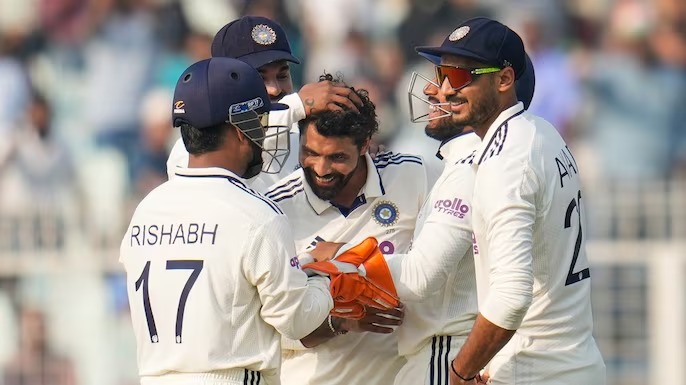Introduction
India vs SA has produced many classic contests, but this latest Test match will be remembered for its shock value and historical weight. South Africa ended a 15-year wait for a Test victory on Indian soil, winning by 30 runs in a tense finish.
The result stunned home fans, especially because India has been almost unbeatable in their own conditions over the last decade. A crucial injury to captain Shubman Gill, a fragile batting response, and relentless South African bowling all combined to flip the expected script.
This match was more than just a single defeat or victory. It exposed weaknesses, highlighted strengths, and reshaped the narrative around both teams in Test cricket.
India vs SA: How a 15-Year Drought Finally Ended
For South Africa, winning a Test in India has always been one of the hardest missions in world cricket. Spin-friendly pitches, a dominant home batting lineup, and passionate crowds create a fortress-like environment. For 15 years, that fortress remained unbroken.
This time, the visitors arrived with a clear plan and immense self-belief. They were patient in the first innings, refused to panic when the pitch started to deteriorate, and focused on building pressure instead of seeking magic balls. Their batters did not chase big, flashy totals, but instead aimed for competitive scores that would keep them in the game.
Once they had something to defend, the South African bowlers treated every run as gold. That combination of discipline, fitness, and mental toughness finally ended the long winless streak in India and rewrote their away record.
India vs SA: Shubman Gill’s Injury and Its Impact
One of the turning points was the sudden injury to India’s captain, Shubman Gill. Neck spasms forced him to leave the field and later head to the hospital for scans and treatment. It was not just the loss of a batter, but the loss of the team’s on-field leader at a delicate stage of the match.
Gill’s absence disrupted India’s batting order and unsettled their dressing room. A younger player had to step into a pressure role, facing a fired-up bowling attack with the match finely balanced. Without their captain to guide the chase, India struggled to reset after early wickets.
Tactically, it also meant less stability in decision-making. Bowling changes, field placements, and reviews had to be managed by stand-in leaders, which always carries risk in a high-stakes Test. The injury did not lose the game by itself, but it clearly tilted the momentum toward the visitors.
India vs SA: South Africa’s Bowling Masterclass in Final Sessions
The final sessions of the match showcased why South Africa’s bowling unit is so respected in Test cricket. With only a moderate total to defend, they had no choice but to attack smartly and maintain intense pressure from both ends.
The pacers hit challenging lengths around the top of off stump, using subtle movement rather than reckless bouncers. They targeted India’s technique and patience, making run-scoring increasingly difficult. At the other end, the spinners exploited the rough patches, drawing edges, playing on batters’ minds, and forcing defensive errors.
What stood out most was their discipline. There were very few loose deliveries. Even when India seemed to be rebuilding with small partnerships, South Africa did not drift away from their plans. Eventually, that consistency paid off in a cluster of wickets that broke India’s resistance and sealed the 30-run win.
India vs SA: Tactical Choices That Tilted the Match
Tactics played a major role throughout the contest. South Africa’s management and captaincy team read the conditions well and adjusted quickly. They did not chase an unrealistic first-innings total and accepted that anything over par on a tricky pitch could be match-defining.
Their field settings were aggressive at the right moments, with close catchers in position when the ball started to grip and bounce. When Indian batters tried to counterattack, the field was quickly reshaped to cut off easy singles and boundary options.
India, on the other hand, appeared a fraction slow in adapting. At times, their bowlers missed consistent lengths in helpful conditions, and their batters took unnecessary risks instead of absorbing pressure. Small tactical decisions, like when to declare, who to promote in the batting order, or when to use particular bowlers, added up over four days and contributed to the final outcome.
India vs SA: India’s Batting Collapse Under Pressure
India’s batting lineup, usually rock-solid at home, found itself under rare and intense pressure. Chasing a tricky target, the team needed calm, controlled partnerships. Instead, early wickets and nervous strokes led to a collapse that swung the match dramatically.
With the captain unavailable due to injury, the responsibility fell on senior players to anchor the innings. While a few batters tried to dig in, the lack of a long, match-defining knock proved costly. Several players got starts but failed to convert them into big scores, often falling to well-planned deliveries or loose shots against the spin.
As the required runs slowly became more daunting, the psychological strain became obvious. Shot selection grew confused, communication between partners suffered, and the South Africans sensed panic. In the end, the collapse was not just technical; it was mental, shaped by pressure, expectations, and the fear of losing at home.
India vs SA: Mental Strength and Handling Indian Conditions
One of the most impressive aspects of South Africa’s win was their mental strength. Touring India can be intimidating: the noise, the heat, the turning ball, and the narrative that visiting teams struggle. Yet the visitors treated this challenge as an opportunity rather than a burden.
They accepted that sessions would be lost but refused to allow one bad hour to become a bad day. When Indian bowlers found rhythm, South Africa focused on survival, trusted their defense, and waited for scoring chances instead of forcing them.
Their bowlers displayed similar composure. Drops, near-misses, or a short burst of boundaries did not break their focus. They stuck to their fields and lengths, believing that persistence would eventually bring rewards. That mental toughness, combined with smart planning, showed that winning in these conditions is possible with the right mindset.
India vs SA: What This Result Means for South Africa’s Rankings
Beyond the emotional high of a famous away win, this result carries big implications for South Africa’s Test rankings. Victory in India is highly valued in the points system because of the difficulty of the conditions and India’s strong home record.
This 30-run triumph is likely to boost South Africa’s position on the Test ladder, narrowing gaps with teams above them and strengthening their case as serious contenders in upcoming Test championships. It also sends a signal to opponents that they can compete and win in any conditions, not just at home.
For younger players in the squad, this match becomes a reference point—a reminder that patience, discipline, and belief can overcome even the toughest assignments. That psychological edge may be just as important as the ranking points they gain from this memorable result.
India vs SA: Lessons for India Ahead of Future Home Series
For India, this defeat offers some painful but valuable lessons. Dominance at home can sometimes hide small weaknesses, and this match exposed a few of them. Batting against high-quality pace and disciplined spin on wearing pitches remains a challenge when early wickets fall.
The team will need to think carefully about its bench strength and leadership depth. Shubman Gill’s injury showed how quickly plans can change. Building more experienced backup options in key roles could protect the side from similar disruptions in the future.
India’s bowlers were effective at times but lacked consistency in key spells. Working on maintaining pressure over longer periods, especially when pitches are responsive, will be important. This loss may hurt now, but if the team responds by improving its preparation and mental resilience, it can become a turning point rather than just a bad memory.
India vs SA: Reaction from Fans, Experts, and the Cricket World
The global reaction to this upset has been intense. Fans in South Africa celebrated a rare and precious away win, seeing it as proof that their Test side still has the quality and character to challenge the best. Social media was filled with praise for their bowlers and admiration for how they fought in tough conditions.
In India, the mood was more reflective. Many supporters expressed disappointment but also gave credit to the visitors. Analysts and former players pointed out tactical errors, batting frailties, and the impact of Gill’s injury, but most agreed that the better team over four days deserved the win.
Around the cricket world, commentators highlighted this game as a reminder of why Test cricket remains so compelling. A match that seemed to favor the home team on paper turned into a gripping battle of skill, strategy, and nerves, ending in a result few had predicted before the first ball was bowled.
FAQs
What made this India vs SA Test win so historic?
This India vs SA match was historic because South Africa claimed their first Test victory on Indian soil in 15 years, breaking a long streak of defeats and draws.
Did Shubman Gill’s injury change the India vs SA result?
Yes, Shubman Gill’s neck spasms affected the India vs SA Test by disrupting India’s batting order and leadership at a crucial stage of the chase.
How will this India vs SA result affect future series?
This India vs SA outcome will boost South Africa’s confidence and rankings while pushing India to review tactics, selection depth, and mental preparation for future home series.
Conclusion
The latest India vs SA Test was more than just another match; it was a story of belief, pressure, and turning points. South Africa’s 30-run win ended a 15-year wait for success in India and reminded the cricket world that even the strongest home records can be challenged.
For India, the defeat brings hard lessons about depth, decision-making, and handling pressure. For South Africa, it is a landmark victory that will inspire future tours and reshape how opponents view them in the longest format.




